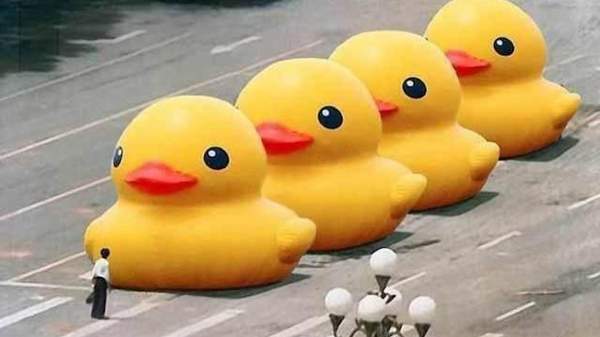Overview
It seems we cannot get enough of the world's most famous inflatable yellow duck. After wowing Sydney Festival-goers at the turn of the year, the 16.5 metre giant then sailed into Hong Kong's Victoria Harbour. When it suffered from a minor deflation, the internet went into overdrive. Now Florentijn Hofman's colossus has become the victim of Chinese censorship after an edited image of the notorious 1989 'tank man' picture emerged this week, mocking Chinese censorship of the June 4 Tiananmen Square massacre. We are electing to call this controversy 'Duckgate'.
Whilst the photoshopping may seem like a joke and draws a laugh worldwide, it is actually representative of the primary form of protest that internet activists can take against Chinese censorship of that day. The events of that tragic day are unsearchable in China on Weibo, the nation's most popular microblog, with the Chinese Communist party (CCP) having banned searchable number combinations associated with the events. They also blocked any other words even remotely associated with the Tiananmen Square massacre, including simple adverbs such as 'tomorrow' if one searched on June 3 and 'today' on June 4, the 24th anniversary of the tragedy. 'Big yellow duck' swiftly joined the censored list on Tuesday afternoon as Weibo became aware of the new 'duck man' image, joining 'lego tank', which was banned after this artwork surfaced.
The censorship is all due to the CCP fearing a threat to their legitimacy, because apparently pretending that something never happened does not threaten your legitimacy at all. Protests like Duckgate are thus important stances taken by online users to circumnavigate censorship and commemorate that day and those who stood up for what they believed in, even if China would have you believe that nothing happened.
Images: Twitter/weibo.com/weibolg
